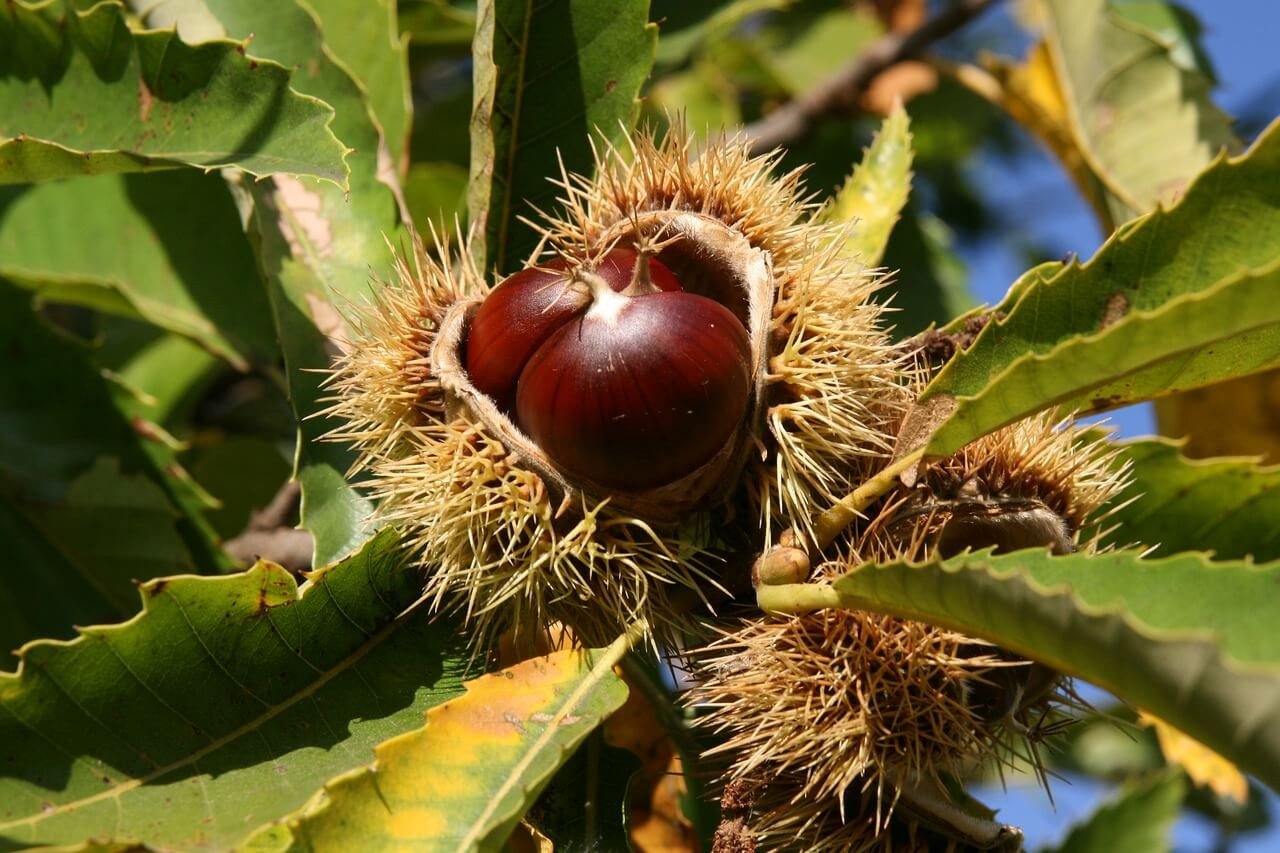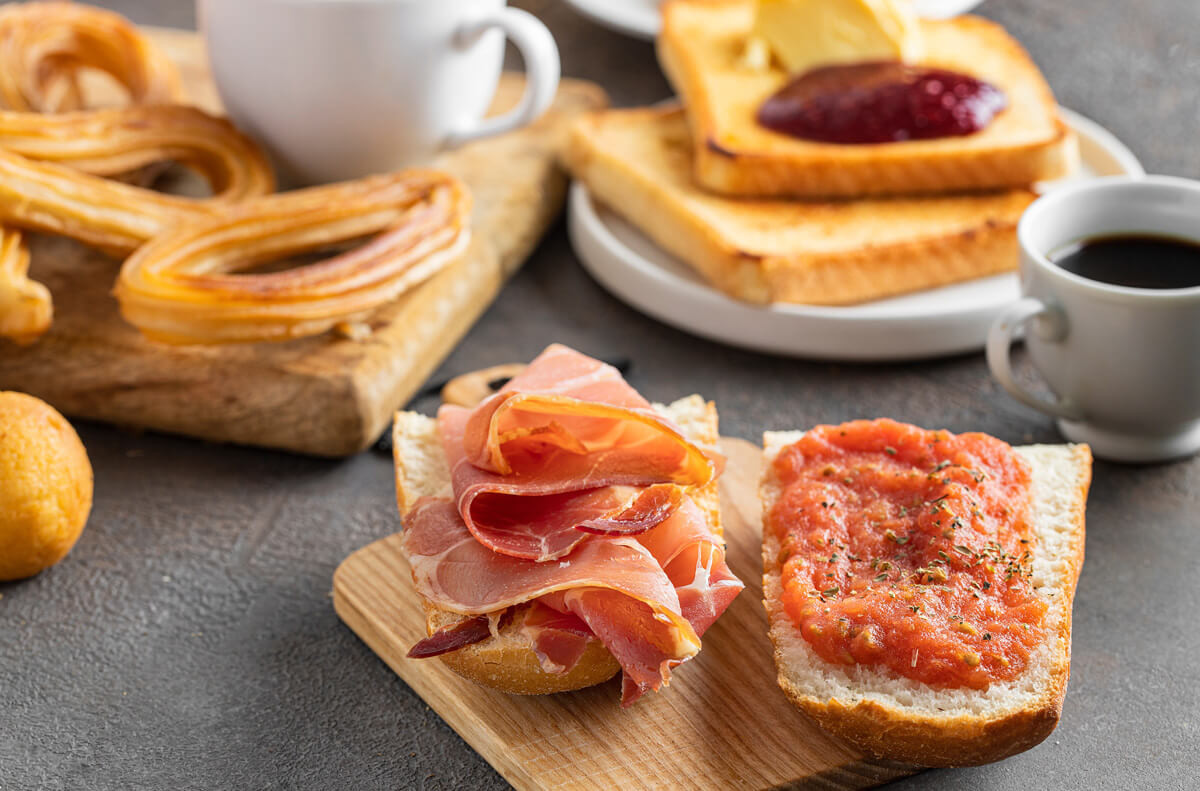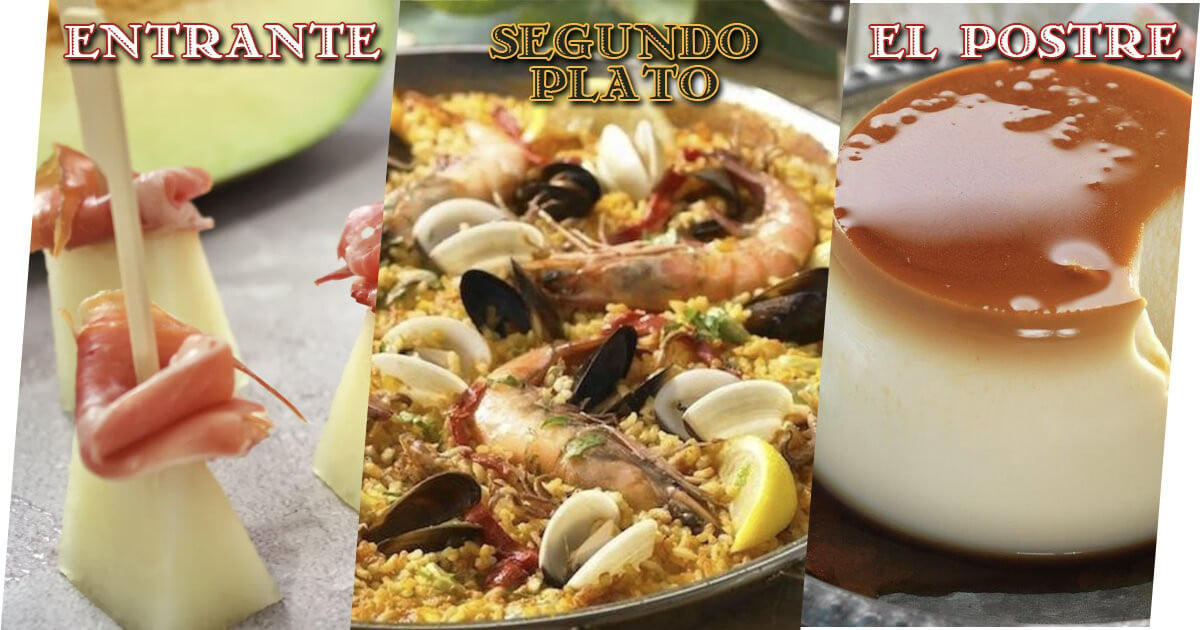Every Autumn, the change in season brings around a time to venture into the woods in the mountains to collect chestnuts or castañas as they are called in Spanish. For many Malagueños (people of Málaga) it is a very important tradition.
From late October to December, along the streets of Andalucía, you can smell the sweet aroma of delicious chestnuts being roasted. It’s a smell often associated with a warm cosy feeling of winter snuggles under blankets by an open fire.
The harvesting season is only from October to November, but luckily you can get them, for only a few euros, on the side of the road until Christmas. Street vendors traditionally get the lovely smoky taste by roasting the chestnuts over a wood burning roaster, they are best enjoyed straight away while they are still warm.

Where are Chestnuts Grown?
You will find the Majority of castaña trees growing in the south of Spain, in the north west region of the province of Málaga, in the Valle del Genal which is between Sierra de las Nieves and Sierra de Grazalema. These trees typically grow well in mountainous terrain with a higher elevation, providing them with more water.
Some of the biggest castaña farms are found in this area, with roughly 3,500 hectares covered in chestnut trees, producing nearly 4.5 million kilos every year! Most of these chestnuts are produced in Serranía de Ronda and are exported to Italy, France, Germany and the UK, where the quality of these nuts are highly valued.
The Romans first introduced harvesting castañas to the Spanish peninsula, though it wasn’t until the 1950’s that it became really popular in the Valle del Genal area. You can find many ancient chestnut trees in the area, especially in Pujerra and Igualeja.
Harvesting
Harvesting the chestnuts is often a family affair, with older children returning from university and distant relatives and friends all coming together to help. The castañas are protected inside a spiked shell which are very sharp and strong, you’ll need thick leather gloves for protection whilst removing the nut from the shell. Another option is use your feet, with your shoes on, to press and roll over the shells and then the nuts should pop out easily. These shells will also naturally open when they are ripe on the trees and will then fall to the ground, where they tend to resemble hundreds of little hedgehogs.
There are believed to be around four or five different varieties of castañas, however the peluda or pilonga is the sweetest and most highly prized as they are also easier to peel.
During harvesting season, at the end of the day, you will often find big queues of locals patiently waiting outside the chestnut factories with their day’s harvest packed into their cars, vans, 4x4’s, tractors or trailers. The nuts are then weighed, sorted, combed, graded and chilled immediately ready for distribution. For best results and to get first grade chestnuts, the quicker they are chilled the better, they need to be harvested and chilled on the same day.

Tostón Festival
The end of the harvest is usually celebrated with the chestnut festival, where they roast chestnuts and drink anisette, brandy or a mistela (a traditionally made, fortified artisanal wine). This usually happens on the first Sunday in November. Because the castañas are not easily digested it is recommend to eat them while they are still warm and accompanied with some sort of liquor or mistela to aid digestion.
Fun fact – tostón is also a slang word. If a person is called a ‘tostón’ they are considered to be rather unpalatable, a bore or a nuisance.
How to cook with chestnuts
Chestnuts are often used to make cakes, stuffings, purées, soups or stews as well as roasting them and eating them whole. They can be blended into a powder and used as a flour replacement.
You shouldn’t eat Castañas raw, due to their tannic acid content, you should always cook them before using them in any form.
Roasting chestnuts:
- Score the chestnuts first, otherwise they will explode! A fun way to know when they are done roasting is to leave one whole, when that one explodes then you will know the rest of them are ready. Score along the rounded side so the flat side is down, you can either do one long line or cut an ‘X’ into them.
- Soak the scored chestnuts in cold water for about an hour, doing this makes it easier to peel them later on.
- Preheat the oven to 200 degrees Celsius, fan assisted.
- Drain and place them in a single layer on a baking sheet. Roast for 20-30 minutes, give them a shake a few times during cooking. When the skins have pulled back and opened and the flesh inside has softened, they should be done. Some may cook faster than others depending on their size, you may need to remove the ones that are fully opened and bake the rest for a little longer

- After they have finished roasting, before peeling them, steam them in a kitchen cloth. Place them in the middle and pull the edges together to make a pouch, let them sit and steam for 10 to 15 minutes. You can also steam them in a paper bag, place them inside then roll down the top of the bag to trap the steam inside.
- When they have finished steaming gently crack the skins by carefully squeezing the nuts using the cloth or bag, they should making a crackling sound.
- The final step is to peel them, by pulling back from the scored sections, while they are still warm to remove the shell and papery thin furry skin underneath, this is called the ‘tan’ and is bitter. It’s really difficult to peel a cold chestnut!
Health benefits from chestnuts
Chestnuts are high in vitamin C and being lower in calories than other nuts they are more similar to fruits than most nuts. They are also a good source of monosaturated fatty acids, amino acids, antioxidants and phenols.
They contain:
- Vitamins C, A, E and B complexes
- Calcium
- Magnesium
- Zinc
- Iron
- Copper
- Manganese
European vs UK chestnuts
Don’t get confused between sweet chestnuts and horse chestnuts, which are common in the UK. In the UK they are known as conkers and there is a game where you tie a string through them and try to break the other persons conker dangling from their string.
Don’t try to eat these as they are poisonous!
Tiene Castañas
If you hear someone say a person ‘tiene Castañas’ it translates as ‘has chestnuts’. It means that person is hard to deal with, this saying comes from the hard work needed to get to the chestnuts, from the harvesting, having to deal with the spikey, prickly outer shells and then the protective husks.

If you would like to live close to the beautiful Castaña trees and witness their cycle of growing green leaves through the spring and summer and then see them change with the autumn to vivid oranges, yellows, reds and browns then give us a call. We can help you find your dream property, within or close to areas with these beautiful trees. With over 35 years of collective experience we are confident we can help you live your dream in Spain. We mainly cover Alhaurín El Grande, Alozaina, Coín, Guaro, Mijas, Monda, Tolox and anywhere else in and around the Guadalhorce Valley. Simply fill in our contact form call us on (+34) 951 242 157
Your new adventure awaits!






